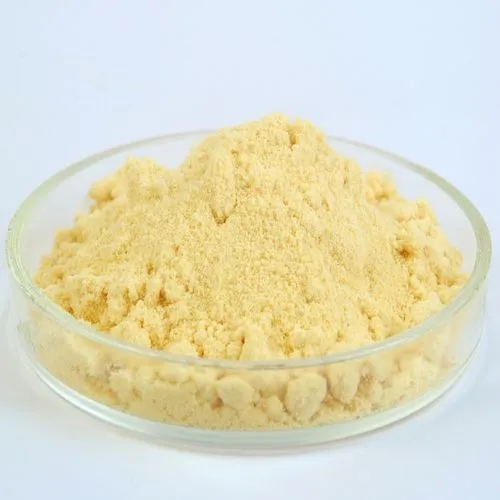Phosphatidyl serine supply price
Time:2023-08-18We can provide some general information about the factors that influence price competition among phosphatidyl serine manufacturers.However, specific pricing details and market dynamics may have changed since then.
Phosphatidyl serine is a naturally occurring phospholipid that has gained attention for its potential cognitive and health benefits.It is commonly used in dietary supplements and functional foods.Price competition among phosphatidyl serine manufacturers can be influenced by some factors,include Raw Material Sourcing,Production Efficiency,Economies of Scale,Quality and Purity,Market Demand and Competition,Brand Reputation,Regulatory Compliance,Geographic Location,Packaging and Presentation,Value-Added Services,Market Trends and Research,ect.
The source and quality of the raw materials used to extract phosphatidyl serine can impact production costs.Suppliers who can secure high-quality raw materials at competitive prices may have an advantage in pricing.
Manufacturers that have efficient production processes and advanced extraction technologies may be able to produce phosphatidyl serine at a lower cost, allowing them to offer competitive prices.
Manufacturers with larger production volumes can often achieve economies of scale, leading to lower production costs per unit.This can enable them to offer more competitive prices.
The purity and quality of the phosphatidyl serine product can affect its price. Manufacturers that can provide a higher purity product with consistent quality may be able to command premium prices.
The level of demand for phosphatidyl serine products and the number of competing manufacturers in the market can influence pricing.High demand and limited competition may lead to higher prices, while intense competition may result in lower prices.
Established and reputable manufacturers with a track record of delivering high-quality products may be able to charge premium prices based on their brand recognition and customer trust.
Manufacturers that invest in meeting regulatory requirements and obtaining relevant certifications (such as GMP, ISO, etc.) may have higher production costs, which can impact pricing.
Manufacturing costs can vary based on the geographic location of the manufacturer. Manufacturers located in regions with lower labor and operational costs may have a competitive advantage in pricing.
Manufacturers that offer innovative packaging, convenient dosage forms, and attractive presentation may be able to differentiate their products and justify higher prices.
Manufacturers that offer additional services such as formulation assistance, custom blends, or private labeling may be able to command higher prices.
Manufacturers that invest in research and development to explore new applications and health benefits of phosphatidyl serine may be able to position their products as premium offerings.
The pricing landscape can evolve over time, influenced by changing market dynamics, supply and demand factors, and other variables.If we are seeking specific pricing information or conducting market research, I recommend reaching out to phosphatidyl serine manufacturers directly to obtain up-to-date and accurate pricing details.



 CN
CN





